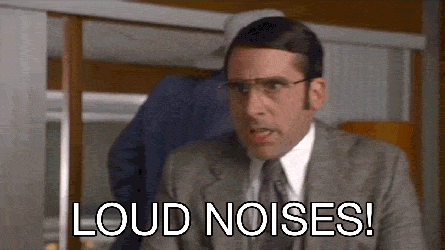
14 Apr Using Sound in Websites: The Common Mistakes
Let’s be honest: in most cases, adding sound to a website is a bad idea. Whether your visitor is at work, in public, or even in the privacy of their own home, sound is an abrupt & unexpected aspect that can quickly convince your viewer to leave the page. If you are considering adding any audio to your website, there are some important dos and don’ts to be aware of:
-
Avoid Automatic Play
Today’s average users have a unique way of surfing the web; instead of opening one page, completing a task, and moving onto the next page, they are opening multiple tabs at once and then going back through them one-by-one. If a sound starts to play from one of those tabs, it is startling and typically leads them to close tabs until the sound stops.
Even if the user does access one page at a time, it’s just as frustrating to suddenly get bombarded by sound! For these reasons, noise applied on websites should default to mute. A volume button should be noticeably displayed for those who want to hear it, but this way you are not inflicting unwanted noise on those who don’t. (Here is a great example of a site doing just that!)
-
Use Discretion in Choosing Sounds
People have different tastes in everything. For this reason, audio should be carefully selected to appeal to the broadest audience possible. Music or other ongoing noise is a gamble that will only appeal to a limited number of visitors; besides, many people listen to their own music while browsing the web, and this kind of chaos will undoubtedly turn them away from your website.
Instead, it is a better idea to keep all sound to a minimum- both in substance and in volume.

-
Be Aware of Website Bandwidth
Every little thing on your website contributes to the amount of data needed to run it. However, constant-running applications such as audio/video streaming use significantly more bandwidth to work properly. If your viewer’s connection isn’t capable of running such features, the sound will cut out and create a much more frustrating user experience.
While home internet connections speeds are far faster than they were ten years ago, speeds on mobile devices still have a long way to go- but continue to provide a substantial number of website visits. The average user will wait three seconds for a site to load before leaving the page, so it’s not worth losing visitors over anything that isn’t providing value!
-
Know (and be Confident of) the Sound’s Purpose
Ask yourself, why do I want to include sound on my website? If the answer is because it would be cool or make the site more interesting, I strongly advise you not to do it. If there is a legitimate purpose for the sound, where a specific benefit comes from adding it, then consider applying the three rules listed above; does the idea still seem worthwhile?
If so, you might be looking at an exception. It’s hard to know unless you add the sound and closely monitor your website traffic. If you aren’t already using Google Analytics or another means to track your visitors, I suggest that you start and collect at least 2 months of data before making the change. That way, you’ll be able to identify if the sound was a mistake before your website sales and/or SEO plummet.



Sorry, the comment form is closed at this time.